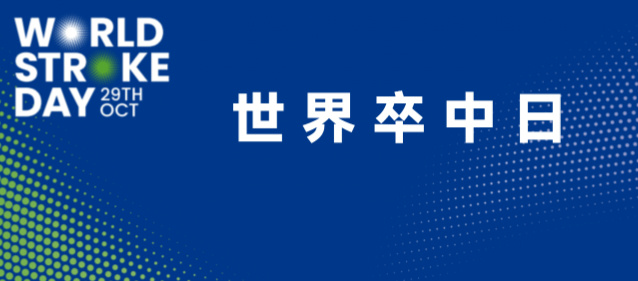利多卡因与硫酸镁联合应用对乳腺癌患者术后疼痛的协同作用:随机、双盲试验
背景与目的 最近,静脉辅助药物的使用,如利多卡因和硫酸镁,在多模式镇痛中得到了越来越多的应用。然而,对这两种药物联合使用产生的效果的评估尚未见报道。本研究旨在评价静脉辅助用药在降低乳腺癌患者术后阿片类药物用量和疼痛评分中的作用。 方 法 纳入198名择期接受乳房切除术的患者。78人被排除在外。术中输注瑞芬太尼(0.1 ugkg-1。min-1)、利多卡因(3 mgkg-1.h-1)、硫酸镁(50
背景与目的
最近,静脉辅助药物的使用,如利多卡因和硫酸镁,在多模式镇痛中得到了越来越多的应用。然而,对这两种药物联合使用产生的效果的评估尚未见报道。本研究旨在评价静脉辅助用药在降低乳腺癌患者术后阿片类药物用量和疼痛评分中的作用。
方 法
纳入198名择期接受乳房切除术的患者。78人被排除在外。术中输注瑞芬太尼(0.1 ug·kg-1。min-1)、利多卡因(3 mg·kg-1.h-1)、硫酸镁(50 mg·kg-1h+15 mg·kg-1。h-1)或利多卡因加硫酸镁。主要结果指标为围手术期阿片类药物消耗和疼痛评分。
结 果
利多卡因组+硫酸镁组(n=30)术中阿芬太尼用量较少(P<0.001),术后二吡咯酮和吗啡用量较少(P<0.001)。利多卡因加硫酸镁组仅2例患者(6.7%)需要吗啡(P<0.001)。与接受瑞芬太尼(n=30; 76.6%,OR=46.00,95%可信区间8.69%~243.25,P<0.001)和硫酸镁(n=30; 70%,OR32.66,95%可信区间6.37%~167.27,P<0.001)治疗的患者比较,术后需要吗啡的患者例数明显降低。利多卡因加硫酸镁组术后前24h内数字评分和言语评分均低于其他3组(P<0.001)。
结 论
利多卡因和硫酸镁在围手术期镇痛中有协同作用。这可能是多模式镇痛方案的另一种潜在策略。
原始文献摘要
Mendon?a FT, Pellizzaro D, Grossi BJ, et,al. Synergisticeffect of the association between lidocaine and magnesium sulfate on peri-operative pain after mastectomy A randomised, double-blind trial [J]. Eur J Anaesthesiol 2020 Mar;37(3) DOI:10.1097/EJA.0000000000001153
BACKGROUNDRecently, the use of venous adjuvants, such as lidocaine and magnesium sulfate, has been gaining ground in multimodal analgesia. However, no study has evaluated the impact a combination of the two drugs.
OBJECTIVES To evaluate the efficacy of venous adjuvants in reducing opioid consumption and pain scores after mastectomy.
DESIGN Randomised, double-blind, parallel-group, non-inferiority clinical trial with a 1 : 1 : 1 : 1 allocation ratio.
SETTING Hospital de Base do Distrito Federal, Brasilia,Federal District, Brazil from November 2014 to December2017.
PATIENTS One-hundred and ninety-eight patients were electively scheduled for mastectomy. Seventy-eight were excluded.
INTERVENTIONS Intra-operative infusions of remifentanil (0.1mgk g-1min-1), lidocaine (3 mg kg-1h-1), magnesium sulfate (50 mg kg-1R15 mg kg-1h-1) or lidocaine with magnesium sulfate were used. All patients received standard general anaesthesia.
MAIN OUTCOME MEASURES Peri-operative opioid consumption and pain scores.
RESULTS The patients who received both lidocaine and magnesium sulfate group (n=30) consumed less alfentanil during surgery (P<0.001) and less dipyrone (P<0.001) and morphine (P<0.001) in the postoperative period. Only two patients (6.7%) in the lidocaine and magnesium sulfate group needed morphine (P<0.001). These requirements were significantly lower when compared with patients who received remifentanil (n=30; 76.6%) and magnesium sulfate (n?30; 70%; odds ratio 46.0, 95% confidence interval 8.69 to 243.25, P<0.001, and odds ratio 32.66, 95% confidence interval 6.37 to 167.27, P<0.001, respectively). The patients of the lidocaine and magnesium sulfate group had lower pain scores in the first 24h postoperatively using the numerical rating scale and verbal rating scale at discharge from the postanaesthesia care unit (P<0.001), after 12 h(P<0.001) and after 24 h (P<0.001) when compared with the other three groups.
CONCLUSION Our findings suggest a synergistic effect of the use of both lidocaine and magnesium in peri-operative pain. This may be another potential strategy in the multimodal analgesia regimen.






